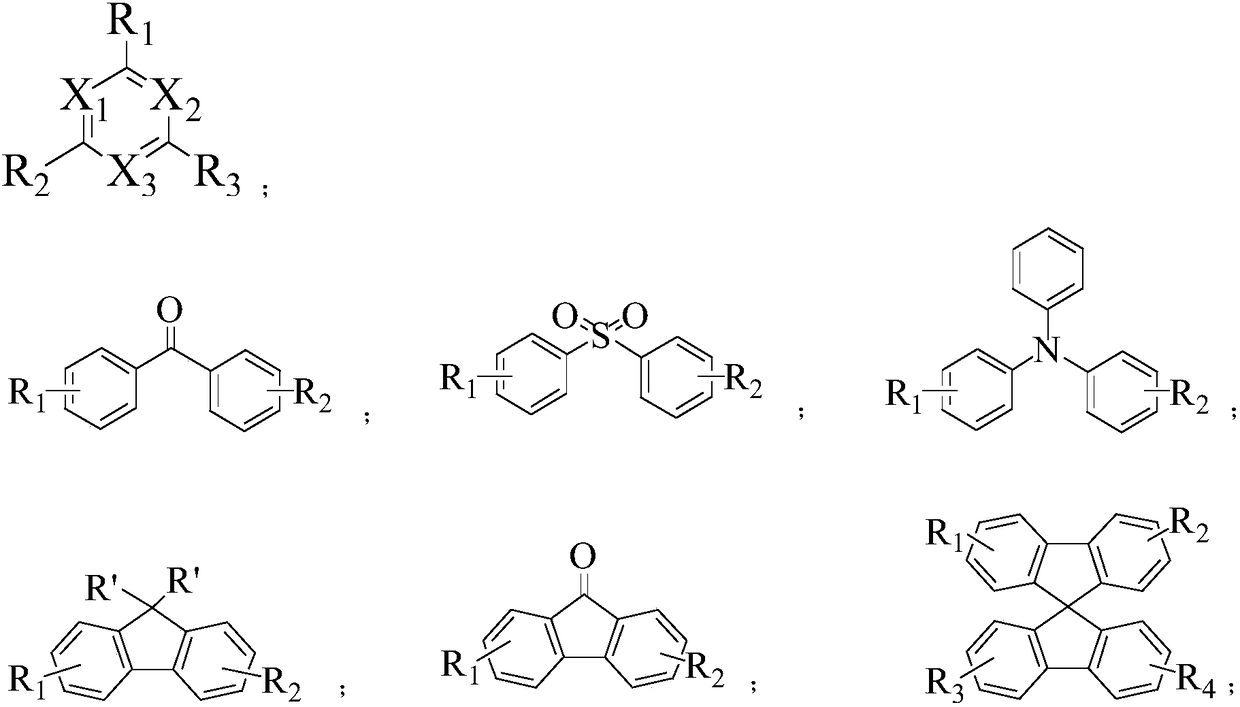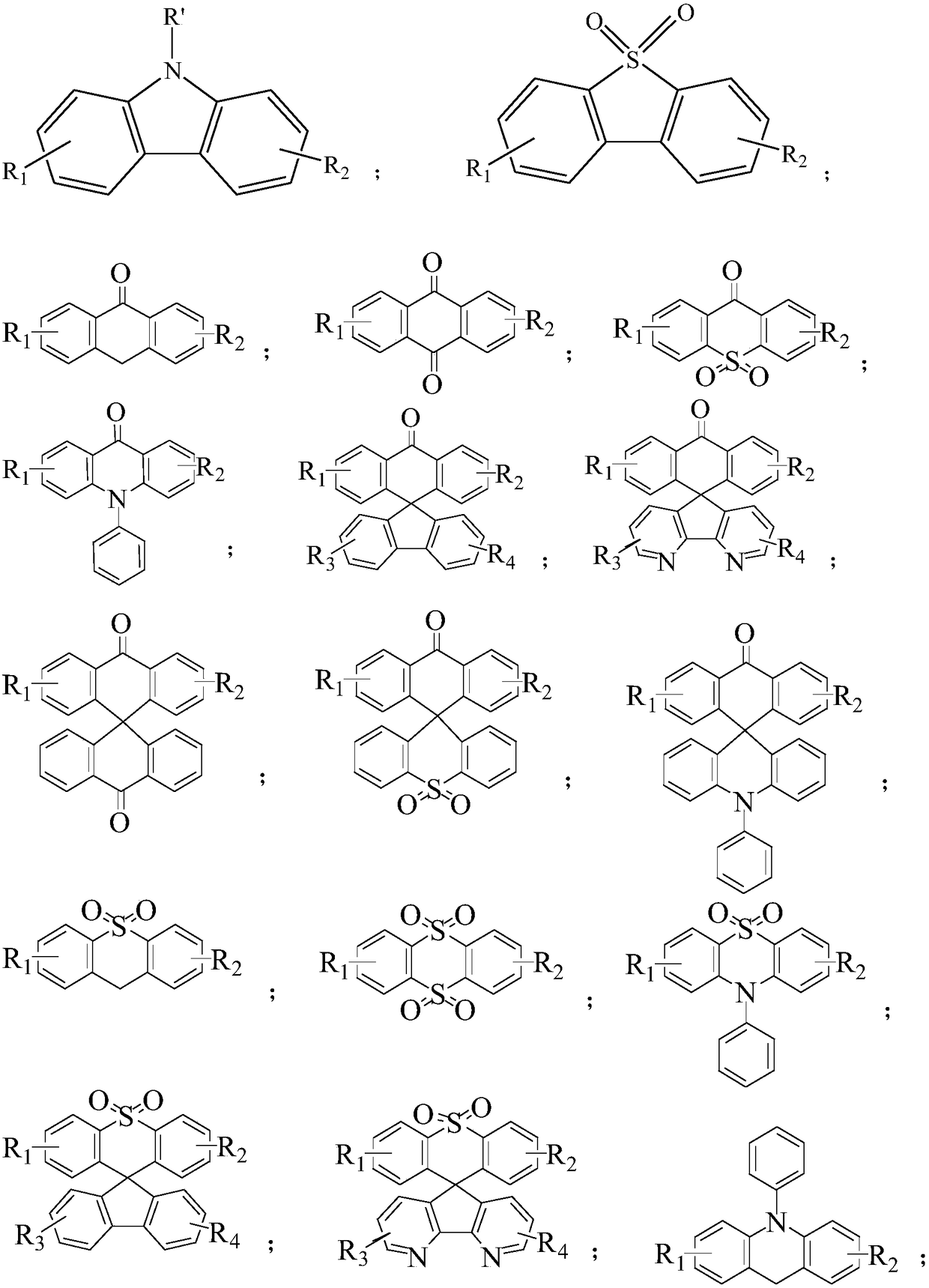Organic light-emitting device
An electroluminescent device and a luminescent technology, applied in the direction of electric solid-state devices, organic chemistry, luminescent materials, etc., can solve the problem of low service life, achieve the effects of increasing service life, avoiding the breakage of molecular bonds of compounds, and inhibiting energy transfer
- Summary
- Abstract
- Description
- Claims
- Application Information
AI Technical Summary
Problems solved by technology
Method used
Image
Examples
Embodiment
[0123] In Embodiment 1, the OLED device can be designed as an organic electroluminescent device with the following structure. The structure of the organic electroluminescent device includes a substrate, an anode, a hole injection layer, a hole transport layer, an organic light-emitting layer, an electron transport layer, insulating buffer layer and cathode.
[0124] The organic light-emitting layer of the organic electroluminescent device is as follows:
[0125] ITO / HATCN[5nm] / NPB[30nm] / D: 5 wt% BCzVBi[30nm] / Bphen[40nm] / LiF[0.5nm] / Al[150nm].
[0126] Among them, compound D is the fluorescent host material provided in the embodiment of the present application, and its structural formula is as follows:
[0127]
[0128] In the molecule of compound D, there are two large steric hindrance groups R' (tert-butyl group here).
PUM
 Login to View More
Login to View More Abstract
Description
Claims
Application Information
 Login to View More
Login to View More - R&D
- Intellectual Property
- Life Sciences
- Materials
- Tech Scout
- Unparalleled Data Quality
- Higher Quality Content
- 60% Fewer Hallucinations
Browse by: Latest US Patents, China's latest patents, Technical Efficacy Thesaurus, Application Domain, Technology Topic, Popular Technical Reports.
© 2025 PatSnap. All rights reserved.Legal|Privacy policy|Modern Slavery Act Transparency Statement|Sitemap|About US| Contact US: help@patsnap.com



